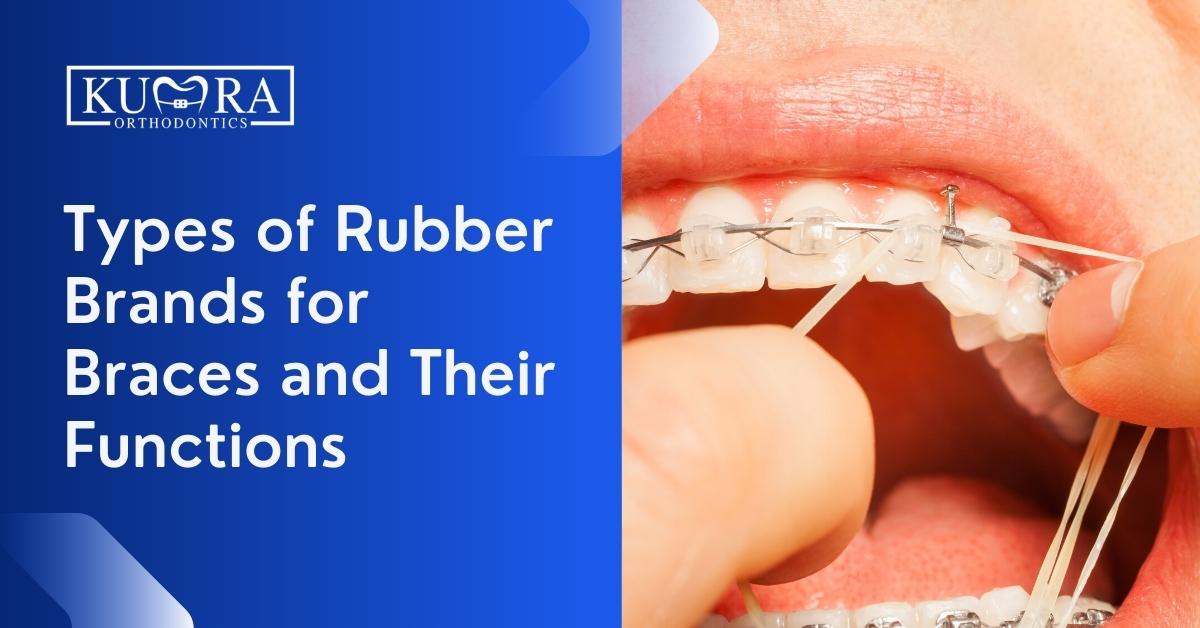Braces are an excellent treatment option for a wide range of dental and jaw problems. They use tension to rearrange your teeth and jaw, which is created by threading an archwire through brackets attached to your teeth. Most orthodontic treatment involves the use of orthodontic rubber bands in order to provide additional pressure to certain areas and move teeth in the desired direction.
In this blog post, we will discuss the different types of rubber bands and their functions. o, whether you are a new patient or have been wearing braces for years, stay tuned to learn more about rubber bands!
What are orthodontic rubber bands?
Orthodontic rubber bands are small, elastic bands that are used in braces to help move teeth into the correct position. They are usually worn for 20-22 hours per day and can be removed for eating and brushing your teeth. Rubber bands come in a variety of sizes, colors, and tensions. The type of rubber band that is right for you will be determined by your orthodontist. Orthodontic rubber bands work by applying gentle force to your teeth. This force slowly moves your teeth over time into the proper alignment according to your braces treatment plan. Improved orthodontic therapy can be achieved by wearing elastics more frequently.
Read More: What Do Rubber Bands Do for Braces?
What are the different types of orthodontic rubber bands?
There are four main types of rubber bands, each with its own classification system. They will be given to you by your orthodontist so that you can get the help you need to correct a specific orthodontic problem.
Class I Elastics
Class I elastics are typically used to close the gap between a patient’s teeth. These run from the upper first or second molar hook to the upper cuspid hook in order to provide force on the teeth roots.
Class II Elastics
Class II elastics are used to correct overjets, a horizontal misalignment of the upper and lower front teeth caused by the upper teeth being pulled back and the lower teeth being pushed forward. This type of elastics are placed around the lower first molar through to the upper canine tooth. They work by applying a gentle force that pushes the upper front teeth and lower back teeth towards their ideal positions.
Class III Elastics
Class III elastics are used to correct an overbite, where the upper teeth protrude too far forward. These rubber bands are placed between the upper and lower molars, and they work by pulling the upper jaw back into alignment.
Needing an orthodontic appointment?
Visit Kumra Orthodontics Washington, DC or Kumra Orthodontics Stafford, VA, and request an appointment with us!
How often do I need to wear elastics?
Full-time or nighttime use of elastic wear instructions is the norm. The majority of the time, full-time wear is suggested to achieve the ideal movement of the teeth and bite. Wearing a brace at night helps keep a correction in place. Since the teeth and bite can only move if pressure is consistent, the difference between wearing a night guard and a full-time guard is significant. The teeth and bite will not move properly if the patient does not follow the recommendations and wears the elastics less than required. This can slow down the treatment process and may result in a less-than-satisfactory outcome.
Some patients wear double elastics to compensate for inadequate rubber band use. The length of time a force is present is more relevant than the force itself in terms of movement. The use of double elastics can exacerbate soreness. If you want the best results, follow your orthodontist’s guidance.
How do I put elastics on my braces?
Ask your orthodontist for advice on how to apply your elastics based on your individual treatment needs and the malocclusion he or she is aiming to fix.
Consider your braces before using rubber bands because they are frequently attached to the hooks of the braces you wear (ask your orthodontist for instructions if you think that will help)
Follow the directions provided by your orthodontist regarding how often and how long to change your rubber bands. In some cases, the bands may need to be replaced more frequently than three times a day.
You must keep up with your orthodontic checkups to ensure that your treatment is on track and that the correct elastic adjustments are made.
Where can I buy elastics for my braces?
Only use the elastics that your orthodontist provides you with. Your orthodontist will give you a set of elastics to wear each day, and it’s very important to wear them as instructed in order to move your teeth into their correct position. Do not try to purchase elastics from another source, as they will not be the right size or strength for your braces.
Orthodontic elastics are a vital part of braces treatment, as they provide the precise amount of tension needed to move teeth into their correct position. Because each patient’s treatment plan is unique, orthodontists supply elastics of a specific size and strength, ensuring they work safely and effectively. Using substitutes from other sources can compromise results, cause discomfort, or even damage the braces.
Similarly, when considering other health-related purchases, such as whether to on this website buy Kamagra oral jelly, individuals should ensure they rely on accurate guidance and professional advice to avoid unnecessary risks. Prioritizing expert recommendations helps maintain both dental health and overall well-being throughout treatment.
Consult Kumra Orthodontics to learn more about types of rubber bands for braces
Orthodontic rubber bands are an important part of orthodontic treatment and can be used to correct a patient’s bite. If you are considering braces, it is important to consult with a qualified orthodontist like Dr. Kumra who can help you choose the right rubber band for your needs. We offer a variety of different types of rubber bands to suit each patient’s unique needs.
Contact Kumra Orthodontics today to learn more about our services and how we can help you achieve the perfect smile!



